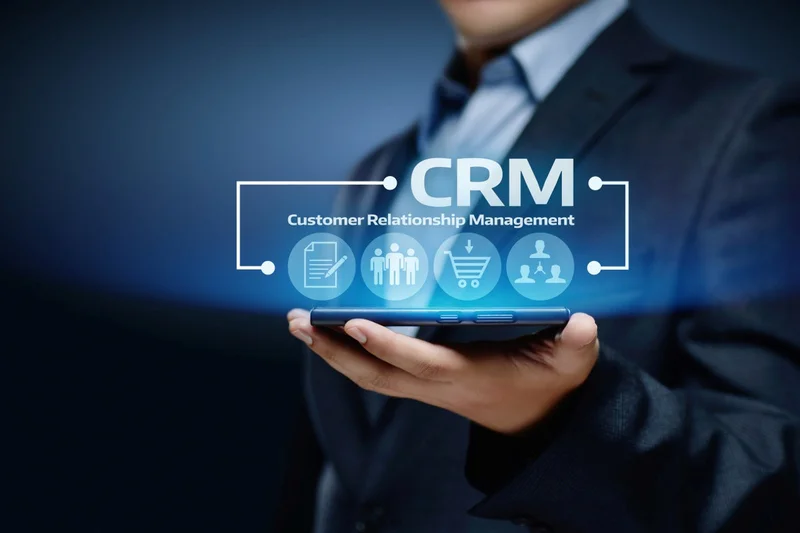Article Directory
So, Salesforce is having a moment. No, not the good kind. The kind where a middle-aged dad suddenly shows up to his kid’s high school party wearing a backwards hat and trying to talk about TikTok trends. It’s awkward, it’s transparent, and it’s giving everyone secondhand embarrassment. The company's frantic pivot to AI feels less like a strategic evolution and more like a full-blown corporate panic attack, played out in public for all of us to see.
One day, they’re announcing a "strategic partnership" with OpenAI, and the stock pops for about five minutes. The next, it’s down nearly 2% because, surprise, nobody actually knows what this means or how it will make money. We get a canned quote from Sam Altman about "making tools work better together," which is the corporate equivalent of saying "we're synergizing our paradigms." It means absolutely nothing. It’s just a press release designed to get the letters "A" and "I" into the same sentence as "Salesforce."
This is a bad look. No, "bad" doesn't cover it—this is a five-alarm dumpster fire of corporate identity crisis. Are we really supposed to believe that embedding ChatGPT into Agentforce 360 is some kind of revolutionary leap? Or is it just a desperate attempt to keep their name in the headlines alongside the companies that are actually building the future? It feels like they're just slapping AI stickers on everything they own and hoping the market is too dumb to notice. Newsflash: it ain't working.
The Benioff Whiplash
You can’t talk about Salesforce’s chaos without talking about the ringmaster himself, Marc Benioff. The man’s public statements are giving me whiplash. One weekend he’s on social media practically begging for Donald Trump to send the National Guard into San Francisco, painting a picture of some post-apocalyptic hellscape. The next, he’s pledging a cool $15 billion to turn that very same city into the "World’s AI Capital."
Which is it, Marc? Is San Francisco a failed state in need of military intervention, or is it the gleaming cradle of the next technological revolution? It can’t be both. This isn't just a messaging problem; it's a credibility problem. It screams of a leader who is reacting, not leading. He’s throwing ideas at the wall to see what sticks, both politically and technologically, and it’s a mess.

This erratic behavior is a perfect metaphor for the company's entire AI strategy. It's all over the place. They’re partnering with OpenAI. They’re partnering with Anthropic. They’re partnering with Stripe. It’s a flurry of activity, a storm of press releases, but where’s the calm center? Where’s the coherent vision? I’m looking, but all I see is a company trying to be everything to everyone, and in the process, becoming nothing in particular. You can almost hear the frantic energy in the boardroom: "Just announce something! Anything! Dreamforce is next week and we have nothing to show but a higher expense report!" And honestly, I bet that's not far from the truth.
The analysts at Stifel seem to agree. They just trimmed their price target from $325 to $300, citing the need for "clear signs of AI monetization." Translation: "We're tired of the talk. Show us the money." They see what we all see. A company whose stock has "failed to gain any momentum" because investors are rightfully skeptical. They’re waiting for Dreamforce, the company’s massive annual conference, to see if Benioff can pull a rabbit out of his hat. But what if there is no rabbit? What if the hat is just full of IOU’s and buzzwords?
A Solution in Search of a Problem
Let’s be real for a second. The core question nobody at Salesforce seems to be asking is: who is this for? Do enterprise customers really need generative AI to help them "query sales records" or "review customer conversations"? Maybe. Or maybe they just need a CRM that works, doesn't cost a fortune, and isn't bloated with a million features they never asked for. This feels like a classic case of Silicon Valley inventing a problem so it can sell you the solution.
The entire tech industry is caught in this AI hype-cycle, a vortex of FOMO that’s forcing every legacy company to pretend they’ve been an "AI-first" company all along. It’s a performance. Salesforce is just performing it louder and more clumsily than most. They're trying to bolt a jet engine onto a 25-year-old steamship, and the bolts are starting to strain. The company is stretching like a spring, as one analyst put it in Salesforce's Recovery Potential Is Stretching Like A Spring (NYSE:CRM), but what happens when that spring snaps?
I’ve seen this movie before. A dominant, aging tech giant gets spooked by the new kid on the block and starts making a lot of noise to prove it’s still relevant. They buy companies, they launch initiatives, they redesign their logo... They do everything except the one thing that actually matters: build a genuinely innovative product that people want to use. Maybe Salesforce will prove me wrong. Maybe Dreamforce will unveil some world-changing AI that justifies all this chaos. Then again, maybe I'm the crazy one for expecting anything more than another slick keynote with vague promises about the future. Afterall, that's the playbook, isn't it?
I'm Getting Dizzy
At the end of the day, all this frantic motion—the partnerships, the price cuts, the CEO's political gymnastics—it all just feels like a distraction. It's noise designed to obscure a simple, uncomfortable truth: Salesforce is a legacy software company terrified of becoming irrelevant. They're throwing spaghetti at the wall, hoping something sticks before the market realizes the kitchen is on fire. This isn't a pivot; it's a panic. And it’s exhausting to watch.
